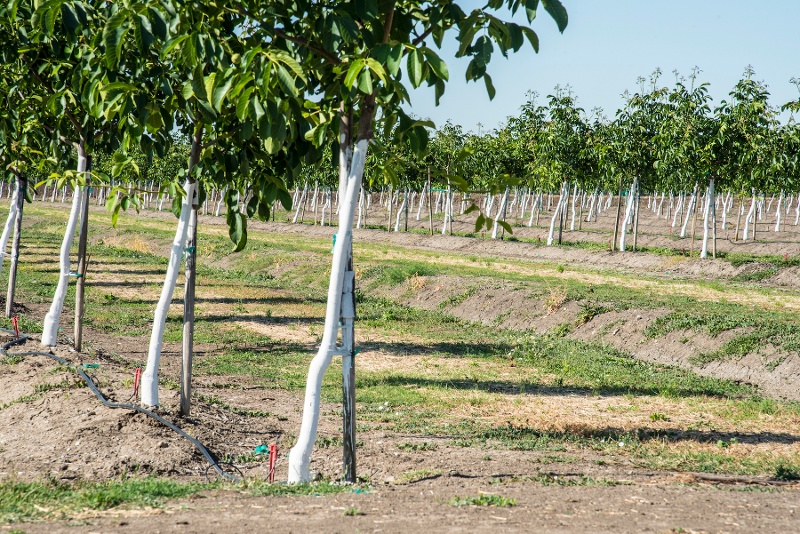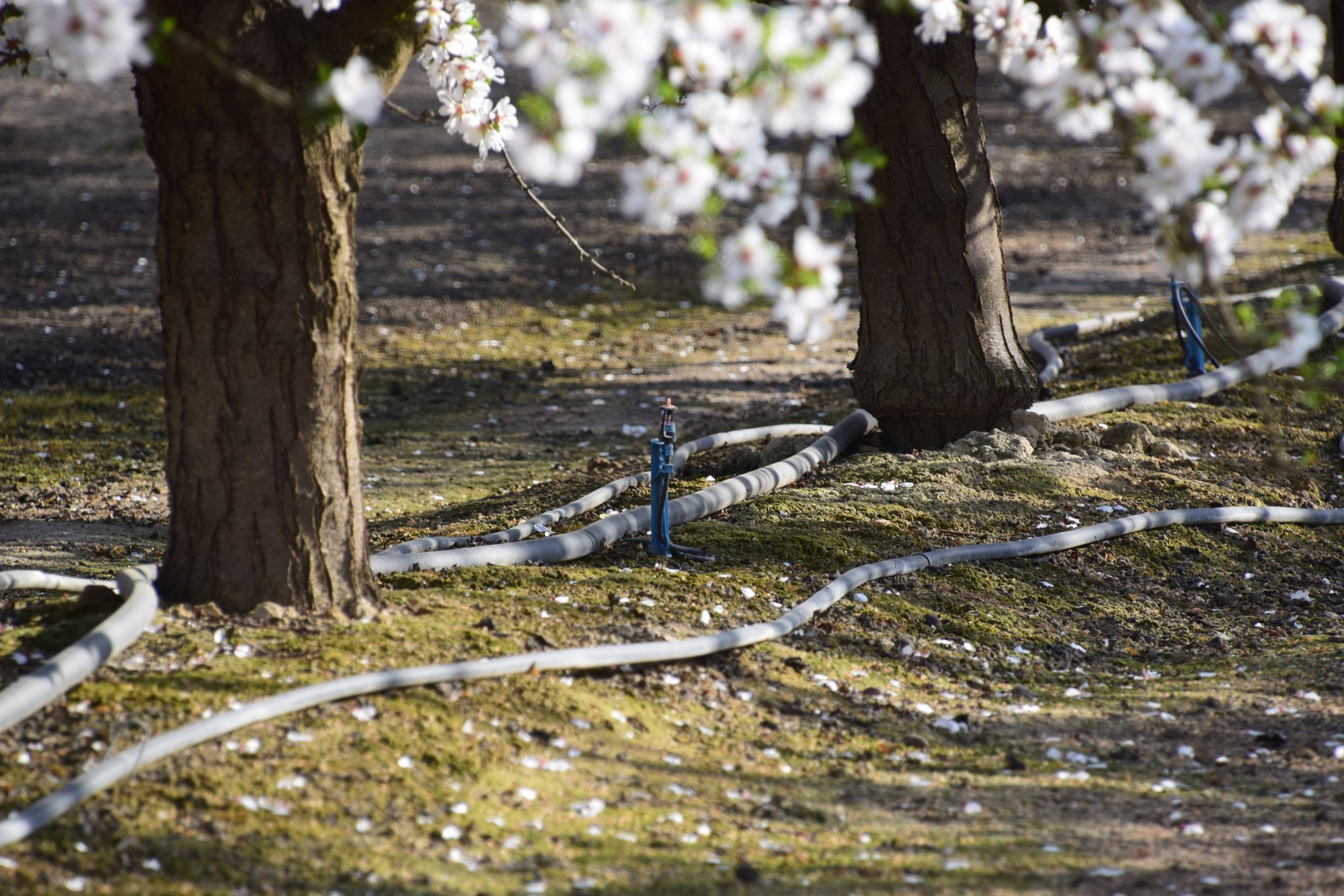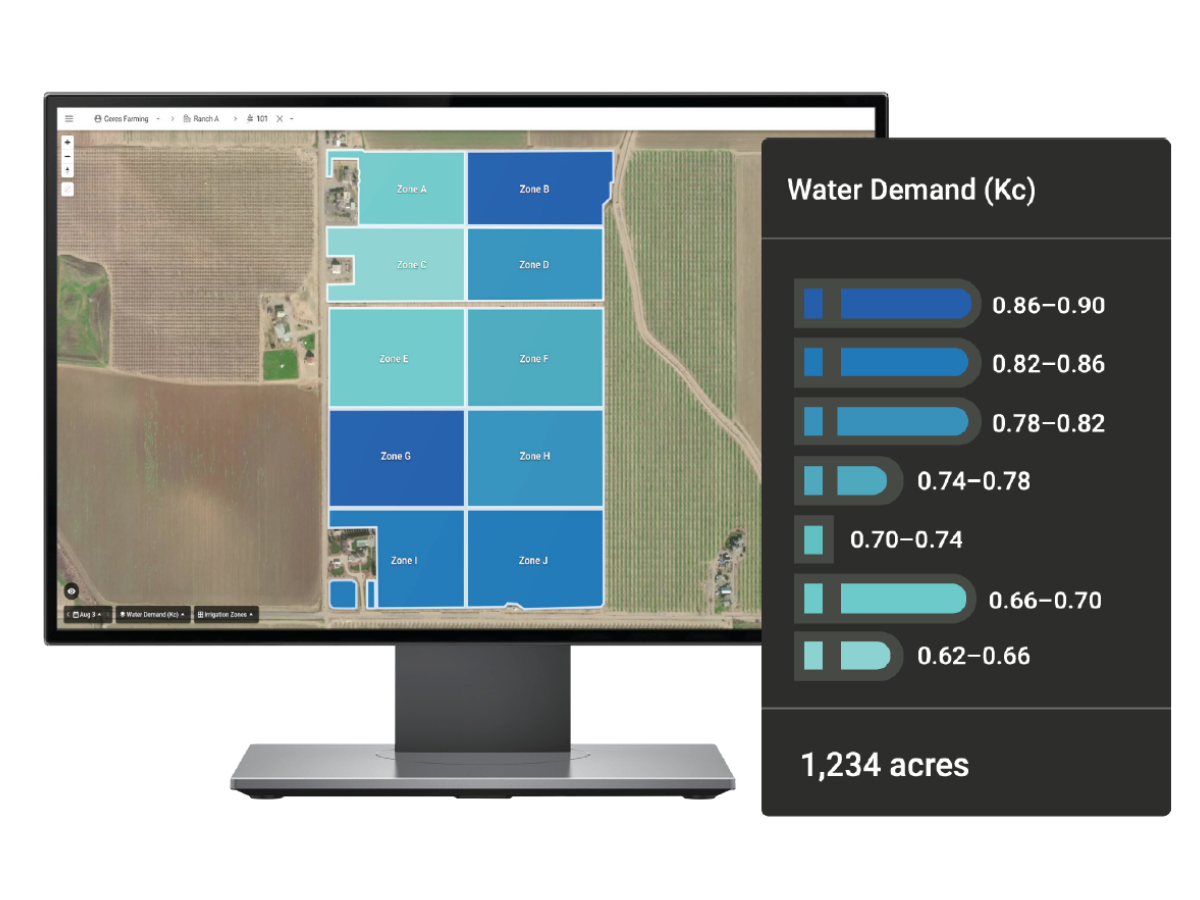Applying the perfect amount of water is every orchard irrigation manager’s ultimate goal—and it's not easy.
Under or over-irrigation creates undue stress, affecting current and future production levels. For instance, under-irrigation of a young almond orchard represses canopy and root establishment during the tree’s non-bearing growth years—while over-irrigation outside of the root zones stimulates unwanted growth, resulting in additional pruning and weed control labor costs.
In addition, irrigation managers must account for water resource planning, including surface water allocations and complying with groundwater management regulations. Growers contend with the constant threat of not having enough water to support their crop, as well as the risk of applying too much water and falling afoul of wastewater discharge regulations.
Precision irrigation aims to strike the fine balance between applying too much and too little water. But to operate a precision irrigation program that maximizes water resources without threatening crop development requires understanding and applying crop coefficient (Kc) values.
What is a crop coefficient (Kc) value?
To understand how much water to apply in an orchard, irrigation managers must know the amount being lost via evaporation from soil and plant surfaces, and through transpiration from the crop's leaves. Collectively, this is called crop evapotranspiration (ET).
But each crop’s ET is different, and furthermore, changes throughout the growing season. A crop coefficient (Kc) value helps to correct for these differences.
A crop coefficient (Kc) compares the crop’s evapotranspiration observed under field conditions (ETc) to the evapotranspiration of a well-watered reference crop under optimal conditions (ETo). The reference crop is typically a perennial grass, such as alfalfa. A single crop may have several different Kc values depending on its stage of development.

The Kc value serves as a correction factor to help predict variations in ET. Orchard managers can use Kc values to adjust irrigation to meet the crop's water needs as they vary over the course of the season.
In orchards, canopy cover has a significant effect on ET. The more canopy cover the orchard has, the more ET occurs as water is lost through leaf transpiration. For instance, an apple orchard at full bloom may initially use about 20% of the amount of the water used by the reference crop—but water use increases dramatically until full canopy is achieved. At that point, the apple orchard may be using 95% of the water used by the reference crop.
Limitations of crop coefficients
A commonly used approach to estimating crop evapotranspiration (ET) is the FAO-56 method, a guideline for crop water requirements introduced by the Food and Agricultural Organization of the United Nations in 1998. However, while the FAO-56 crop coefficients are widely used, they do have limitations.
Multiple studies have demonstrated that localized variations in growing conditions—such as those caused by climate, disease pressure, fertility levels, and other factors—all affect actual Kc values (sometimes referred to as actual crop coefficient values, Ka, versus typical recommended values, Kc ). Beyond regional conditions, site-specific factors such as plant spacing, size, and density can all impact crop coefficients, too. In almond orchards, studies have reported a range difference of between 0.90 and 1.3 in mid-season Kc values for mature almonds.

Data collected from a lysimeters, devices that measures actual ET, are one method of validating site-specific crop coefficients. However, the use of lysimeters is cost-prohibitive for most commercial orchards, and the tool is for the most part used in research settings.
Fortunately, the relationship between crop canopy and ET—in combination with increasingly sophisticated methods of remote sensing—offers an alternate route to site-specific data for precision irrigation programs.
Crop canopy and crop coefficient values
Recognition of the the relationship between Kc values and crop canopy isn't new. In 1988 a study of peach trees concluded,
“The increase in Kc values over the growing season and year-to-year variability was largely accounted for by midday tree canopy light interception. Weather parameters such as vapor pressure deficit, wind speed, temperatures and solar radiation accounted for very little additional variability. Therefore, light interception seems to be the main variable needed to explain changes in Kc due to tree size and leaf area development, and may even apply to young trees and different tree and vine species."
More recent is the development of reliable methods to quantify this relationship, and leverage it for precision irrigation applications. By measuring the fraction of ground shaded by the canopy (Fc), it's possible to calculate a site-specific Kc value—without manual field measurements from lysimeters. A 2020 study found that the use of remote sensing to measure vegetation characteristics for the purpose of Kc values produced ET estimates that matched actual daily ETs within an acceptable margin of error.
 Water Demand Maps from Ceres Imaging use aerial data to generate Kc values specific to conditions in growers' own fields.
Water Demand Maps from Ceres Imaging use aerial data to generate Kc values specific to conditions in growers' own fields.
That Fc can be measured from aerial imagery allows growers a more affordable way to calculate site-specific Kc values. To date, most efforts using this approach have utilized satellite-based NDVI data to measure Fc—but satellite imagery is generally unable to differentiate between subtle differences in vegetation characteristics, resulting in less accurate Fc values, and by extension less accurate Kc values. By contrast, Ceres Imaging's method hinges on high-resolution aerial data to calculate Fc. By using pixel-based segmentation land cover classifications, Ceres distinguishes between the crop itself and other surfaces to remove "contamination: from the imagery.
The takeaway for irrigation managers
For orchard irrigation managers, it is important to recognize that while traditional Kc values are an excellent first step for a precision irrigation program, they aren't perfect.
Site-specific Kc values allow for a more accurate estimation of real-time orchard ET, and therefore irrigation needs. This is especially important as more acute weather events continue to stress water resources and crop development.
Deeper understanding of the usefulness of Fc in generating Kc values has recently given rise to new tools for refining actual ET rates. And because Fc can be measured remotely, using aerial imagery, growers now have the option of a more affordable way to determine site-specific Kc values.
